56 have author last names that start with L have author last names that start with L
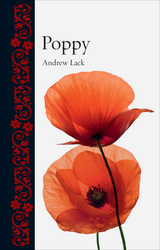
Lack looks deep into the past of the poppy’s ancient history—before it seemed to inhabit only ditches and cornfields—and examines the biology that gives it its unique coloring. He analyzes the poppy’s many members of this beautiful family, including the opium poppy, which is the source of one of the world’s oldest—and most ravaging—narcotics. He describes how the poppy came to be associated with war and remembrance, and he looks at how they have been used to commemorate everything from weddings to funerals. Beautifully illustrated, the book will appeal to gardeners or anyone fascinated by the way plants have so powerfully figured in human culture and traditions.
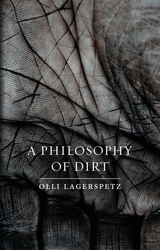
As participants in material culture, we not only produce things and dispose of them, but we also engage with them practically, aesthetically, and morally. Everything, in essence, comes back to dirt and waste. Ranging through subjects and times, from Heraclitus of Ephesus to the Renaissance (via Heidegger and Mary Douglas), from the hygienic products of modernity to abject art, Lagerspetz constantly questions current thinking on all subjects most foul. Proposing a new view of dirt based on our physical engagement with the world, A Philosophy of Dirt is essential reading for all students of philosophy and for anyone who’s felt soiled—and wants to know why.

Drawing on more than thirty years of study, leading Bernstein scholar Paul R. Laird describes Bernstein’s work as a conductor, composer, music educator, and commentator, evaluating all of his major compositions. Laird also explores the impact of Bernstein’s complicated personal life on his professional work, including his homosexuality and many affairs with men, and his strong yet difficult marriage. Featuring original insights into Bernstein’s life and work, including information gleaned from a 1982 interview with Bernstein, Laird’s book is the ideal introduction to Bernstein’s eclectic musical style and complex character, showing how both fit within the larger world of twentieth-century music.

In Bat, Tessa Laird challenges our preconceptions as she combines fascinating facts of bat biology with engaging portrayals of bats in mythology, literature, film, popular culture, poetry, and contemporary art. She also provides a sobering reminder of the threats bats face worldwide, from heatwaves and human harassment to wind turbines and disease. Illustrated with incredible photographs and artistic representations of bats from many different cultures and eras, this celebration of the only mammals possessing true flight will enthrall batty fans, skeptics, and converts alike.
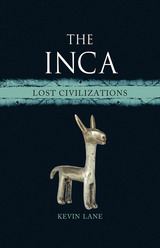
In their heyday, the Inca ruled over the largest land empire in the Americas, reaching the pinnacle of South American civilization. Known as the “Romans of the Americas,” these fabulous engineers converted the vertiginous, challenging landscapes of the Andes into a fertile region able to feed millions, alongside building royal estates such as Machu Picchu and a 40,000-kilometer-long road network crisscrossed by elegant braided-rope suspension bridges.
Beautifully illustrated, this book examines the mythical origins and history of the Inca, including their economy, society, technology, and beliefs. Kevin Lane reconsiders previous theories while proposing new interpretations concerning the timeline of Inca expansion, their political organization, and the role of women in their society while showcasing how their legacy endures today.
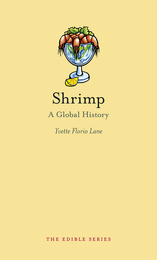
In this lively and entertaining book, Yvette Florio Lane embarks on a lively historical tour of the production and consumption of Earth’s beloved crustacean. Over the centuries, shrimp have been hailed as an indulgence, a luxury, and even an aphrodisiac. They have been served to show hospitality, demonstrate status, and celebrate special occasions. They can also be culinary ambassadors, inspiring novel cooking techniques and the introduction of new tastes around the world. Demand for the creatures, however, has now exceeded supply. Whether fished from the ocean with nets or deep-sea trawlers, or raised in modern aquaculture farms, the world produces and eats more (and cheaper) shrimp than ever before, but often at great cost. Shrimp is a delicious, fascinating, and troubling history of a culinary favorite.

John T. Lang begins by grounding the debates in the biology and chemistry behind genetic modification. He then shows how food is deeply imbued with religious, social, cultural, and ethical meanings, which bring a variety of non-scientific issues to the forefront and make genetically modified food a proxy for larger debates regarding topics such as globalization and corporate greed. Centrally, he contends that the controversies surrounding the technology reflect ongoing tensions between social and political power, democratic practice, and corporate responsibility. As Lang illustrates, while modern, mechanized, and genetically enhanced production has given the consumer an unprecedented variety and quantity of food, it has also introduced new social and environmental vulnerabilities and uncertainties into the global food system.
Bringing together science, politics, economics, and culture, this book offers a deeply informed look at an important aspect of modern agriculture. It will prove invaluable to anyone who shops at the grocery store, whether they like the benefits that genetic modification has to offer or fear that nature is something we should have left alone.
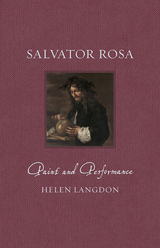
Painter, poet, and actor Salvator Rosa was one of the most engaging and charismatic personalities of seventeenth-century Italy. Although a gifted landscape painter, he longed to be seen as the preeminent philosopher-painter of his age. This new biography traces Rosa’s strategies of self-promotion and his creation of a new kind of audience for his art. The book describes the startling novelty of his subject matter—witchcraft and divination, as well as prophecies, natural magic, and dark violence—and his early exploration of a nascent aesthetic of the sublime.
Salvator Rosa shows how the artist, in a series of remarkable works, responded to new movements in thought and feeling, creating images that spoke to the deepest concerns of his age.

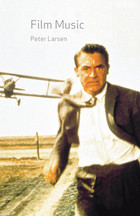
Taking off from a variation of that question—whether music accompanies a film or a film illustrates the music—Peter Larsen probes the complex relationship between the two. He charts the history of music in film, exploring along the way the role that music plays in the narrative and psychological functions of film. Examining such classics and blockbusters as The Big Sleep, American Graffiti, North by Northwest, and Blade Runner,Larsen uses these case studies to demonstrate how scores and soundtracks can expose unexpected new facets of a film.
A wholly accessible examination, Film Music will be an essential read for music scholars and film buffs alike.

Moss and Lichen is a celebration of the extraordinary biology, beauty, and resilience of two unassuming organisms. Endowed with unique abilities to thrive in extreme habitats, mosses and lichens defy easy categorization. Mosses, which are integral to the plant kingdom, and lichens, which are a kingdom unto themselves, colonize a variety of landscapes from rainforests to deserts to urban streets. Long neglected for lacking flowers, these organisms are now beloved for their significant role in maintaining the health of our world’s ecosystem.
Elizabeth Lawson describes how mosses and lichens shape landscapes, prevent erosion, and sequester carbon, but she also offers a wide-ranging introduction to the biologists, artists, and writers inspired by their beauty. Moss and Lichen will inspire a newfound appreciation for these unsung heroes of the natural world.
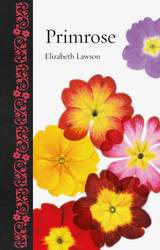
This book tells the story of how primroses became so successful, circling the Earth, adapting to human civilization, and yet holding their own on inaccessible craggy summits where they may never be seen. Bringing together facts, folklore, and beautiful images from around the world, Primrose is a delightful guide to this hugely popular flower.
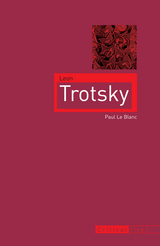
In Leon Trotsky, Paul Le Blanc delves deep into Trotsky’s life and relationships to reveal and make sense of his complex character and decisive actions. Interweaving dramatic historical events with examinations of Trotsky’s multi-faceted personality, he offers incisive views of the key facets of Trotsky’s life: his involvement with Soviet bureaucracy, the Spanish Civil War, and the rise of Hitler in the years before World War II. Illuminating Trotsky’s personal and political struggles and achievements, this balanced portrait will be invaluable to history students or anyone interested in the extraordinary lives that made up the twentieth century.
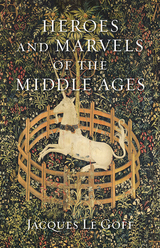

This biographical study integrates Sartre’s works into his personal life, revealing the intimate contexts in which his philosophy developed. From Sartre’s beginnings as a bright and precocious student, Leak explores how he struggled against the repressive strictures of bourgeois expectations, endured cruelty at the hands of schoolmates, and forged his conflicted personality within a fragmented family life. The book probes his particularly influential relationships with a range of people—from Simone de Beauvoir to Gaston Gallimard—and how Sartre was transformed by historical events, in particular his service in World War II.
Telling anecdotes, personal correspondence, and archival photographs expose how Sartre’s own challenges emerged as predominant themes in his works—such as the often blurred delineation between the real and imaginary, and his preoccupation with definitions of “madness” in the individual. Leak’s astute and provocative examination of Sartre himself challenges the philosopher’s assertion about the limits of knowledge of the other.

Leane details the important challenges that the South Pole poses to humanity, asking what it can teach us about ourselves and our relationship with our planet. She examines its allure for explorers such as Robert F. Scott and Roald Amundsen, not to mention the myriad writers and artists who have attempted to capture its strange, inhospitable blankness. She considers the Pole’s advantages for climatologists and other scientists as well as the absurdities and banalities of human interaction with this place. Ranging from the present all the way back to the ancient Greeks, she offers a fascinating—and lavishly illustrated—story about one of the strangest and most important places on Earth.
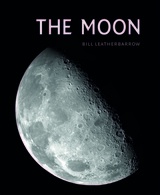
In The Moon, celebrated amateur astronomer Bill Leatherbarrow provides expert insight into the history of our study of this compelling astronomical body. Drawing on his own decades of lunar observation, he describes how and why the observation and study of the moon has evolved, particularly in the age of telescopic study. He also offers an overview of current scientific thinking and developments in lunar science since the advent of the Space Age, even providing practical advice on how to make your own observations of the moon. Extensively illustrated with images of the lunar surface taken both from spacecraft and using amateur equipment, this book is an accessible introduction to complex astrophysical concepts that will give all amateur astronomers and anyone fascinated by this natural satellite something to moon over.

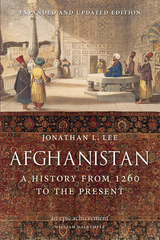
Located at the intersection of Asia and the Middle East, Afghanistan has been strategically important for thousands of years. Its ancient routes and strategic position between India, Inner Asia, China, Persia, and beyond has meant the region has been subject to frequent invasions, both peaceful and military. As a result, modern Afghanistan is a culturally and ethnically diverse country, but one divided by conflict, political instability, and by mass displacements of its people. In this magisterial illustrated history, Jonathan L. Lee tells the story of how a small tribal confederacy in a politically and culturally significant but volatile region became a modern nation-state.
Drawing on more than forty years of study, Lee places the current conflict in Afghanistan in its historical context and challenges many of the West’s preconceived ideas about the country. Focusing particularly on the powerful Durrani monarchy, which united the country in 1747 and ruled for nearly two and a half centuries, Lee chronicles the origins of the dynasty as clients of Safavid Persia and Mughal India: the reign of each ruler and their efforts to balance tribal, ethnic, regional, and religious factions; the struggle for social and constitutional reform; and the rise of Islamic and Communist factions. Along the way, he offers new cultural and political insights from Persian histories, the memoirs of Afghan government officials, British government and India Office archives, and recently released CIA reports and Wikileaks documents. He also sheds new light on the country’s foreign relations, its internal power struggles, and the impact of foreign military interventions such as the “War on Terror.”
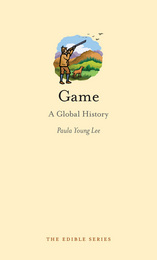
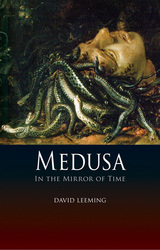
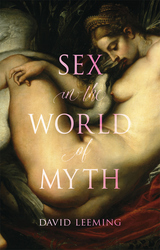
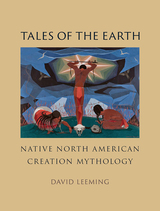
Tales of the Earth is a comprehensive yet concise overview of Native American mythologies. After outlining theories of the origins of Native North Americans, David Leeming considers the creation myths of many tribes, emphasizing four commonly occurring figures: the Great Spirit, the trickster, the goddess, and the hero. Leeming suggests that in addition to these figures, Native American mythologies have in common a deep reverence for the earth and for community responsibility as opposed to individualism—tenets that stand in stark contrast to the concepts of exceptionalism and Manifest Destiny that characterize the United States, a nation that was built on ancient tribal land.
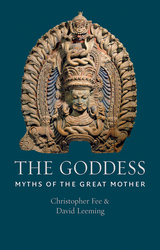
Leeming and Fee use the goddess to gaze into the lives and souls of the people who worshipped her. They chart the development of traditional Western gender roles through an understanding of the transformation of concepts of the Goddess from her earliest roots in India and Iran to her more familiar faces in Ireland and Iceland. They examine the subordination of the goddess to the god as human civilizations became mobile and began to look upon masculine deities for assurances of survival in movement and battle. And they show how, despite this history, the goddess has remained alive in our spiritual imaginations, in figures such as the Christian Virgin Mother and, in contemporary times, the new-age resurrection of figures such as Gaia.
The Goddess explores this central aspect of ancient spiritual thought as a window into human history and the deepest roots of our beliefs.


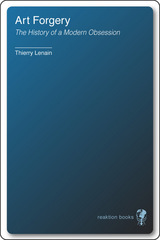

As she explains, liquid crystal is a curious material phase that organizes a substance’s molecules in a crystalline form yet allows them to move fluidly like water. Observed since the nineteenth century, this phase has been a deep curiosity to science and, in more recent times, the key to a new era of media technology. In between that time, as Leslie shows, it has figured in cultural forms from Romantic landscape painting to snow globes, from mountaineering to eco-disasters, and from touchscreen devices to DNA. Expertly written but accessible, Liquid Crystals recounts the unheralded but hugely significant emergence of this unique form of matter.

Esther Leslie considers how radical innovations in chemistry confounded earlier alchemical and Romantic philosophies of science and nature while profoundly influencing the theories that developed in their wake. She also explores how advances in chemical engineering provided visual artists with new colors, surfaces, coatings, and textures, thus dramatically recasting the way painters approached their work. Ranging from Goethe to Hegel, Blake to the Bauhaus, Synthetic Worlds ultimately considers the astonishing affinities between chemistry and aesthetics more generally. As in science, progress in the arts is always assured, because the impulse to discover is as immutable and timeless as the drive to create.

Closing with his death at the Spanish-French border in a desperate flight from the Nazis and Stalin, Walter Benjamin is a concise and concentrated account of a capacious intellect trapped by hostile circumstances.
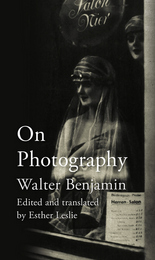
On Photography presents a new translation of that essay along with a number of other writings by Benjamin, some of them presented in English for the first time. Translator and editor Esther Leslie sets Benjamin’s work in context with prefaces to each piece and contributes a substantial introduction that considers Benjamin’s engagement with photography in all its forms, including early commercial studio photography, the uses of photography in science, and much more.

More than eighty years before the invention of Coca-Cola, sweet carbonated drinks became popular around the world, provoking arguments remarkably similar to those they prompt today. Are they medicinally, morally, culturally, or nutritionally good or bad? Seemingly since their invention, they have been loved—and hated—for being cold or sweet or fizzy or stimulating. Many of their flavors are international: lemon and ginger were more popular than cola until about 1920. Some are local: tarragon in Russia, cucumber in New York, red bean in Japan, and chinotto (exceedingly bitter orange) in Italy. This book looks not only at how something made from water, sugar, and soda became big business, but also how it became deeply important to people—for fizzy drinks’ symbolic meanings are far more complex than the water, gas, and sugar from which they are made.

With clear, jargon-free, and inspirational prose, sections on “Storytelling and the Big Idea,” “Listening and Receiving,” “Getting Stuck,” “Empathy and Collaboration,” and “Presenting and Persuading” signal a larger shift in design toward staying true to creative instincts and learning to trust the surprising power and resilience of the creative process itself. This enlightening and timely book is essential reading for designers, architects, and readers working in all creative fields.

For thousands of years, birches have given the people of northern temperate forests and beyond raw materials in the form of leaves, twigs, branches, bark, wood, and sap—materials used not simply to survive, but to flourish and express identity in practical and spiritual ways. Tough, waterproof, and flexible, birch bark has been used for everything from basketry and clothing to housing, transport, musical instruments, and medicines, and even to communicate and record sacred beliefs: some of our most ancient Buddhist texts and other historic documents are written on birch bark. Birches have not only shaped regional indigenous cultures—for example, in the form of the Native American wigwam and the birch bark canoe—they also continue to be of global economic importance today. Featuring an arbor of illustrations and rich analyses, Birch is an enlightening look into the history and possible future of these beautiful trees.

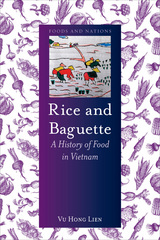
Rice and Baguette traces the prehistoric Việt’s progress from hunter-gathers of mollusks and small animals to sophisticated agriculturalists. The book follows them as they developed new tools and practices to perfect the growing of their crops until rice became a crucial commodity,which then irrevocably changed their diet, lifestyle, and social structure. Along the way, the author shows how Việt cuisine was dramatically influenced by French colonial cookery and products, which introduced a whole new set of ingredients and techniques into Vietnam. Beautifully illustrated throughout and peppered with fascinating historical tales, Rice and Baguette reveals the long journey that Vietnamese food has traveled to become the much-loved cuisine that it is today.
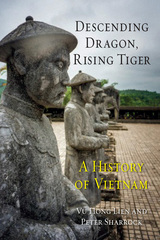
Drawing on archeological evidence that reveals the emergence of a culturally distinct human occupation of the region up to 10,000 years ago, Vu Hong Lien and Peter D. Sharrock show that these early societies had a sophisticated agricultural and technological culture much earlier than previously imagined. They explore the great variety of cultures that have existed in this territory, unshackling them from the confined histories of outsiders, imperial invaders, and occupiers in order to show that the country has been central to the cultural, political, and ethnic development of Southeast Asia for millennia. Unrivaled in scope, this comprehensive account will be the definitive history of the Vietnamese people, their culture, and their nation.
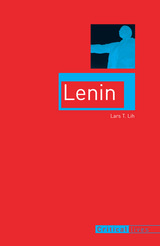
After Karl Marx, Vladimir Lenin (1870–1924) is the man most associated with communism and its influence and reach around the world. Lenin was the leader of the communist Bolshevik party during the October 1917 revolution in Russia, and he subsequently headed the Soviet state until 1924, bringing stability to the region and establishing a socialist economic and political system.
In Lenin, Lars T. Lih presents a striking new interpretation of Lenin’s political beliefs and strategies. Until now, Lenin has been portrayed as a pessimist with a dismissive view of the revolutionary potential of the workers. However, Lih reveals that underneath the sharp polemics, Lenin was actually a romantic enthusiast rather than a sour pragmatist, one who imposed meaning on the whirlwind of events going on around him. This concise and unique biography is based on wide-ranging new research that puts Lenin into the context both of Russian society and of the international socialist movement of the early twentieth century. It also sets the development of Lenin’s political outlook firmly within the framework of his family background and private life. In addition, the book’s images, which are taken from contemporary photographs, posters, and drawings, illustrate the features of Lenin’s world and time.
A vivid, non-ideological portrait, Lenin is an essential look at one of the key figures of modern history.
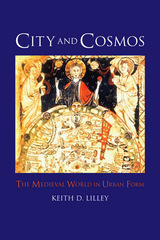
In City and Cosmos, Keith D. Lilley argues that the medieval mind considered the city truly a microcosm: much more than a collection of houses, a city also represented a scaled-down version of the very order and organization of the cosmos. Drawing upon a wide variety of sources, including original accounts, visual art, science, literature, and architectural history, City and Cosmos offers an innovative interpretation of how medieval Christians infused their urban surroundings with meaning.
Lilley combines both visual and textual evidence to demonstrate how the city carried Christian cosmological meaning and symbolism, sharing common spatial forms and functional ordering. City and Cosmos will not only appeal to a diverse range of scholars studying medieval history, archaeology, philosophy, and theology; but it will also find a broad audience in architecture, urban planning, and art history. With more of the world’s population inhabiting cities than ever before, this original perspective on urban order and culture will prove increasingly valuable to anyone wishing to better understand the role of the city in society.
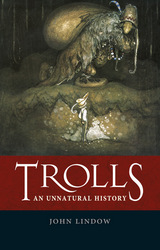
To explain why trolls still hold our interest, John Lindow goes back to their first appearances in Scandinavian folklore, where they were beings in nature living beside a preindustrial society of small-scale farming and fishing. He explores reports of actual encounters with trolls—meetings others found plausible in spite of their better judgment—and follows trolls’ natural transition from folktales to other domains in popular culture. Trolls, Lindow argues, would not continue to appeal to our imaginations today if they had not made the jump to illustrations in Nordic books and Scandinavian literature and drama. From the Moomins to Brothers Grimm and Three Billy Goats Gruff to cartoons, fantasy novels, and social media, Lindow considers the panoply of trolls that surround us and their sometimes troubling connotations in the contemporary world.
Taking readers into Norwegian music and film and even Yahoo Finance chat rooms, Trolls is a fun and fascinating book about these strange creatures.

"as comprehensive a guide as anyone could wish to the appearances of the Evil One in art and literature throughout the age."—The Herald

The idea of photographing the dead is as old as photography itself. For the most part, early death photographs were commissioned or taken by relatives of the deceased and preserved in the home as part of the family collection. Once thought inappropriate and macabre, today these photographs are considered to have a beneficial role in bereavement therapy.
Photography and Death reveals the beauty and significance of such images, formerly dismissed as disturbing or grotesque, and places them within the context of changing cultural attitudes towards death and loss. Excluding images of death through war, violence, or natural disasters, Audrey Linkman concentrates on photographs of natural deaths within the family. She identifies the range of death-related photographs that have been produced in both Europe and North America since the 1840s and charts changes in their treatment through the decades.
Photography and Death will interest photo, art, and social historians and practitioners in the field of bereavement therapy, as well as those who wish to better understand the images of long-lost ancestors who gaze back from the pages of family albums.
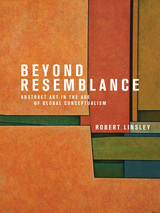
Linsley shows how abstraction is a response to the world we live in, one that deliberately avoids moralizing, explanation, or overt polemic. He champions the work of lesser-known but important artists from India, China, and Latin and Central America, such as Vasudeo S. Gaitonde, Ding Yi and Gunther Gerzso as well as the more familiar names from history, such as Lucio Fontana, Frank Stella and Gerhard Richter, treating their work with equal seriousness. He also looks toward abstract art’s future, showing that it still has plenty of life and purpose as a genre that helps us find a clear space to make sense of the times we live in. Ultimately, Linsley demonstrates the unique, rich, and full experience that abstract art can give us. Richly illustrated, this book is a must-read for art historians and art lovers.
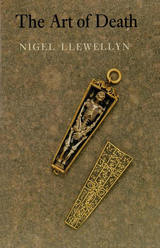
Illustrated and explained in this book are an array of little-known objects and images such as death's head spoons, jewels and swords, mourning-rings and fans, wax effigies, church monuments, Dance of Death prints, funeral invitations and ephemera, as well as works by well-known artists, including Holbein, Hogarth and Blake.

In this insightful and compelling biography, the only one in English currently available, Christopher Lloyd situates Maupassant’s life and work in the literary and social context of nineteenth-century France. He skillfully introduces the reader to Maupassant’s most famous works, such as Boule de suif, Bel-Ami, and Pierre et Jean, as well as highlights the important stages and achievements of his life and legacy.
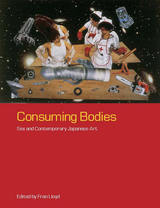
Sex and consumerism in art are inextricably linked to issues of power, gender, class and race, and move beyond the gallery into private and public realms, where the complex relationships surrounding sexuality and commerce are directly encountered in both the fast-changing marketplace and in the dominant ideologies within Japanese society.
With over 150 intriguing illustrations, Consuming Bodies provides a wide-ranging perspective on an under-researched area of contemporary Japanese art practice and the critical issues it uncovers.

Lloyd argues that Baudelaire’s writings and life were intimately intertwined—and both were powerfully informed by contemporaneous political events, from his participation in the 1848 Revolution to the public morality codes that banned his controversial writings, such as Les fleurs du mal. The book traces the influence of these events and other political moments in his poems and essays and analyzes his works in this new light. Lloyd also examines the links between Baudelaire’s works and cultural movements of the time, from the rise and fall of Romanticism to symbolism, and explores his groundbreaking translations of Edgar Allan Poe’s writings into French.
Baudelaire’s tumultuous personal life figures large here, too, as Lloyd draws out fascinating aspects of his personality and daily life through analysis of archival writings of his friends and acquaintances. The book also documents his battles with syphilis and drug addiction, which ultimately resulted in his death. An engrossing and wholly readable biography, Charles Baudelaire will be essential for scholars and Baudelaire admirers alike.
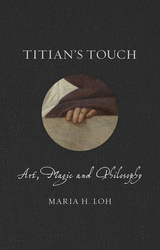
Titian’s art, Maria H. Loh argues in this exquisitely illustrated book, was and is a synesthetic experience. To see is at once to hear, to smell, to taste, and to touch. But while Titian was fully attached to the world around him, he also held the universe in his hands. Like a magician, he could conjure appearances out of thin air. Like a philosopher, his exploration into the very nature of things channelled and challenged the controversial ideas of his day. But as a painter, he created the world anew. Dogs, babies, rubies, and pearls. Falcons, flowers, gloves, and stone. Shepherds, mothers, gods, and men. Paint, canvas, blood, sweat, and tears. In a series of close visual investigations, Loh guides us through the lush, vibrant world of Titian’s touch.
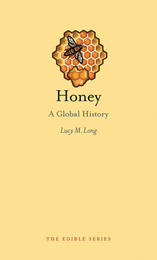
Long points to a crucial fact about honey: it can be enjoyed with very little human processing, which makes it one of the most natural foods we consume. Its nutritional qualities and flavors dramatically reflect the surroundings in which it is produced, and those who produce it—bees—are some of the most important insects in the world, the chief pollinators of wild plants and domesticated crops alike. Showing how honey has figured in politics, religion, economics, and popular culture, Long also directly explores its tastiest use—in our food and drink—offering a history of its culinary place in the world, one sweetened with an assortment of delicious recipes. Lively and engaged, her account will give even the saltiest of us an insatiable sweet tooth.
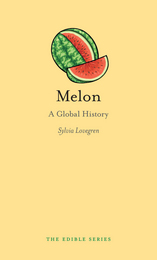
Along the way, Lovegren details the impact the melon has had on humankind. Moving from ancient and medieval medical recipes to folk tales, stories, growing contests, and genetics, she explores the diverse ways we have cultivated, enjoyed, and sometimes even feared this fruit. She explores how we have improved modern melons over centuries of breeding, and how some growers and scientists today are trying to preserve and even revive ancient melon strains. Richly illustrated and with a host of ancient, medieval, and modern recipes, Melon is a delightful look at the surprising history of one of the world’s most sumptuous fruits.
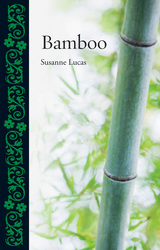
We may think of bamboo only as a snack for cuddly panda bears, but we use the plant as food, clothing, paper, fabric, and shelter. Drawing on a vast array of sources, this book builds a complete picture of bamboo in both history and our modern world. Susanne Lucas shows how bamboo has always met the physical and spiritual requirements of humanity while at the same time being exploited by people everywhere.

This book is the first definitive history of the corridor, from its origins in country houses and utopian communities in the seventeenth and eighteenth centuries, through reformist Victorian prisons, hospitals, and asylums, to the “corridors of power,” bureaucratic labyrinths, and housing estates of the twentieth century. Taking in a wide range of sources, from architectural history to fiction, film, and TV, Corridors explores how the corridor went from a utopian ideal to a place of unease: the archetypal stuff of nightmares.
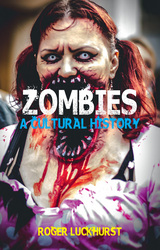
Luckhurst follows a trail that leads from the nineteenth-century Caribbean, through American pulp fiction of the 1920s, to the middle of the twentieth century, when zombies swarmed comic books and movie screens. From there he follows the zombie around the world, tracing the vectors of its infectious global spread from France to Australia, Brazil to Japan. Stitching together materials from anthropology, folklore, travel writings, colonial histories, popular literature and cinema, medical history, and cultural theory, Zombies is the definitive short introduction to these restless pulp monsters.

Theme Park takes the primitive amusements of pleasure gardens as its starting point and launches from there into a rich, in-depth investigation of the evolution of the theme park over the twentieth century. Lukas examines theme parks in countries around the world—including in the United States, Mexico, Europe, Japan, China, South Africa, and Australia—and how themed fairs and parks developed through diverse means and in a variety of settings. The book examines world-famous and lesser-known parks, including the early parks of Coney Island; Madrid’s Movieworld; a series of World Fairs and their luxurious exhibition halls; Six Flags parks and virtual theme parks today; and, of course, the unparalleled achievements of Disneyland and Disney World.
Lukas analyzes the theme park as a living entity that unexpectedly shapes people, their relationships, and the world around them. Theme parks have now become complex representations of the human mind itself, he contends, through its interpretations of books, feature films, video games, and Web sites. Ultimately, Theme Park reveals, the wider influence of theme parks can be found in the shopping malls, branded stores, and casinos that employ the tricks and techniques of amusement parks to dominate our entertainment world today.
Packed with captivating illustrations, Theme Park takes us on historical roller coaster ride that both reanimates the places that shaped our childhoods and anticipates the future of escapism and fantasy fun.

Chris Marker is the first systematic examination of Marker's complete oeuvre. Here, Catherine Lupton traces the development and transformation of the artist's work from the late 1940s, when he began to work as a poet, novelist, and critic for the French journal Esprit, through the 1990s and the release of his most recent works, including Level Five and the CD-ROM Immemory. Lupton explicates Marker's work as a circular trajectory, with each project recycling and referring back to earlier works as well as to a host of adopted texts, always proceeding by oblique association and lateral digression. This trajectory, which Lupton outlines with great care and precision, is critical to understanding Marker's abiding obsession: the forms and operations of human memory. With this theme as her architecture, Lupton presents the most comprehensive and incisive analysis of Marker to date.
Incorporating historical events and cultural contexts that have informed each phase of Marker's career, Lupton gives readers access to an artist who stands outside of the mainstream and thus defies easy explanation. There is no better guide than Lupton's to this modern master's prolific and multidimensional career.

READERS
Browse our collection.
PUBLISHERS
See BiblioVault's publisher services.
STUDENT SERVICES
Files for college accessibility offices.
UChicago Accessibility Resources
home | accessibility | search | about | contact us
BiblioVault ® 2001 - 2024
The University of Chicago Press









